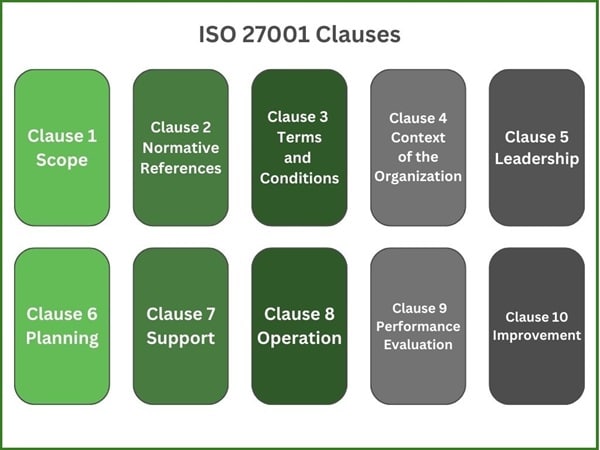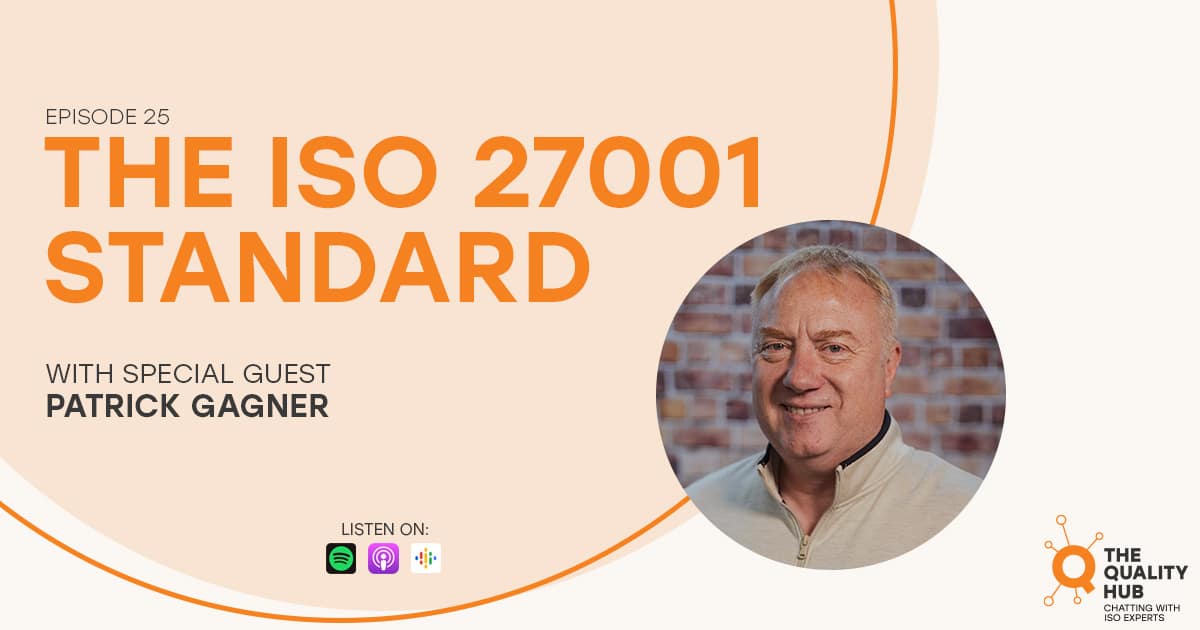ISO 27001 Clause 6 Explained
What is ISO 27001 Certification?
ISO 27001 is an internationally recognized standard designed to help organizations protect their information’s confidentiality, integrity, and availability. It provides a structured approach to managing sensitive company data, ensuring that it remains secure in today’s complex, threat-filled environment. The certification process centers around an information security management system (ISMS), which is a framework that helps organizations assess, manage, and continuously improve their information security practices.
A key aspect of ISO 27001 is its risk management approach. Organizations are required to systematically assess potential risks to their information and implement appropriate security controls to mitigate them. This risk-based focus helps ensure that the right resources are applied in the most critical areas, optimizing both security and efficiency.
Get a Free Quote
Annex A of the ISO 27001 document
The standard provides a comprehensive set of security controls, which are detailed in Annex A of the ISO 27001 document. These controls cover a broad range of security measures, from access control and encryption to incident management and physical security. While not all controls may be applicable to every organization, they offer a thorough foundation that can be tailored to meet specific needs and address unique threats.
By focusing on the core principles of confidentiality, integrity, and availability, ISO 27001 ensures that sensitive information is handled appropriately. Confidentiality ensures that only authorized individuals can access the information, integrity keeps the data accurate and complete, and availability guarantees that the information is accessible when needed, ensuring seamless operations even in high-risk environments.
ISO 27001 certification also helps organizations meet a wide range of legal, regulatory, and contractual obligations. In industries such as finance, healthcare, and IT services, where data security is of paramount importance, ISO 27001 can provide a competitive advantage by demonstrating to clients and stakeholders that the organization adheres to globally recognized information security practices.
The certification process involves an external audit conducted by an accredited certification body. During the audit, the organization’s ISMS is evaluated to ensure that it meets the standard’s requirements. Successfully passing the audit results in certification, is a powerful statement of an organization’s commitment to safeguarding information.
Finally, ISO 27001 emphasizes the importance of continuous improvement. As new threats emerge and technology evolves, organizations are encouraged to regularly review and update their ISMS. This proactive approach to information security ensures that the organization remains resilient, agile, and prepared to face any future challenges.
Achieving ISO 27001 certification not only protects data but also enhances trust and credibility, positioning an organization as a leader in information security.
What is the ISO 27001 Clause 6 About?
ISO 27001 Clause 6 focuses on planning for the information security management system (ISMS) and outlines key requirements that organizations must meet when establishing, implementing, and maintaining their ISMS. It is crucial for ensuring that the organization’s approach to managing information security risks is aligned with its overall business objectives.

Here’s a breakdown of the main requirements of ISO 27001 Clause 6:
1. Actions to Address Risks and Opportunities (Clause 6.1):
This part requires organizations to consider both risks and opportunities related to information security. The aim is to ensure that the ISMS can achieve its intended outcomes, prevent or reduce undesired effects, and encourage continuous improvement.
6.1.1: Organizations must plan actions to address these risks and opportunities, ensuring that the ISMS can continually improve and adapt to changing environments.
6.1.2: Organizations must conduct a risk assessment process to identify and assess risks that could affect the security of their information. This assessment should be systematic and should define criteria for evaluating risks and ensuring the severity of risks is considered.
6.1.3: Following the risk assessment, organizations must establish a risk treatment plan, which outlines how identified risks will be mitigated through specific controls.
These controls may be chosen from the set of information security controls provided in Annex A or others deemed appropriate to address the identified risks.
2. Information Security Objectives and Planning to Achieve Them (Clause 6.2):
Clause 6.2 outlines the need for organizations to set clear and measurable information security objectives. These objectives should be relevant to the organization’s operations, aligned with its strategic goals, and consistent with the ISMS.
-
- Information security objectives must be measurable, meaning there should be clear metrics that allow for tracking performance.
- The organization should plan how to achieve these objectives, specifying the resources, timeframes, and responsible parties involved in reaching these goals.
- These objectives should be regularly reviewed and updated to ensure they remain effective and aligned with any changes in the organization’s security needs or broader goals.
3. Planning of Changes to the ISMS (Clause 6.3):
ISO 27001 recognizes that change is inevitable, and organizations must plan for changes to their ISMS. Clause 6.3 requires that organizations plan and manage changes in a controlled manner to prevent unintended consequences or disruptions to information security.
-
- Changes to the ISMS might include updates to policies, processes, technologies, or organizational structure.
- Any change must be carefully considered, with its potential impact on the ISMS, risks, and controls evaluated before implementation.
- The organization should ensure that changes support the continual improvement of the ISMS.
Summary:
Clause 6 of ISO 27001 emphasizes the importance of proactive planning when managing information security. It requires organizations to systematically address risks and opportunities, set clear objectives, and ensure that changes to the ISMS are planned and controlled. This approach helps ensure that the ISMS remains aligned with the organization’s goals, is capable of mitigating information security risks, and supports continuous improvement.
What’s the difference between ISO 9001 Clause 6 and ISO 27001 Clause 6?
ISO 9001 and ISO 27001 are different standards with distinct objectives—ISO 9001 focuses on quality management, while ISO 27001 is centered on information security management. Although Clause 6 in both standards deals with planning, they focus on different areas, reflecting the broader purpose of each standard.
Here’s a comparison between ISO 9001 Clause 6 and ISO 27001 Clause 6:
1. Scope and Focus
-
- ISO 9001 Clause 6 (Quality Management System): ISO 9001 Clause 6 is part of the planning process for a Quality Management System (QMS). Its focus is on ensuring the organization meets customer and regulatory requirements while promoting continuous improvement of product and service quality.
- ISO 27001 Clause 6 (Information Security Management System): ISO 27001 Clause 6 deals with the planning process for an Information Security Management System (ISMS). The focus here is on identifying and managing information security risks to ensure the confidentiality, integrity, and availability of information.
2. Addressing Risks and Opportunities
-
- ISO 9001 Clause 6.1: In ISO 9001, Clause 6.1 emphasizes planning actions to address risks and opportunities related to quality. This is done to ensure that the QMS can achieve its intended results, enhance customer satisfaction, and prevent undesirable outcomes such as poor product quality or service failure.
- ISO 27001 Clause 6.1: ISO 27001 Clause 6.1 requires organizations to plan actions to address risks and opportunities specifically related to information security. The focus here is on protecting information from threats, vulnerabilities, and breaches that could harm the organization’s information assets. This clause requires a risk assessment and a risk treatment plan, specific to information security risks.
3. Objectives Setting
-
- ISO 9001 Clause 6.2: ISO 9001 Clause 6.2 requires organizations to set quality objectives that are consistent with the quality policy and are aimed at improving customer satisfaction and product/service quality. These objectives must be measurable, monitored, and reviewed to ensure they contribute to overall business performance and continuous improvement.
- ISO 27001 Clause 6.2: ISO 27001 Clause 6.2 mandates setting information security objectives to enhance the security of information assets. These objectives should be measurable and aligned with the ISMS, helping the organization mitigate risks and improve its security posture.
4. Planning of Changes
-
- ISO 9001 Clause 6.3: ISO 9001 Clause 6.3 requires planning for changes to the QMS. Changes may relate to product design, process improvements, or any other aspect of the quality management system. The objective is to ensure that changes are implemented in a controlled manner, maintaining or improving the quality of outputs.
- ISO 27001 Clause 6.3: ISO 27001 Clause 6.3 similarly requires careful planning of changes to the ISMS. However, the focus is on ensuring that changes, such as new security policies, processes, or technologies, do not negatively impact the organization’s information security controls. Any change should be evaluated for its potential risk to information security.
5. Risk Treatment
-
- ISO 9001: ISO 9001 doesn’t explicitly include risk treatment planning, though it discusses the concept of addressing risks and opportunities more broadly for quality improvements and performance consistency.
- ISO 27001: ISO 27001 requires a detailed risk treatment plan (Clause 6.1.3), which identifies specific security controls to mitigate the risks identified during the risk assessment. This is crucial for protecting sensitive information.
Summary of Key Differences:
-
- ISO 9001 Clause 6 is about managing risks and opportunities to enhance product/service quality, customer satisfaction, and business performance.
- ISO 27001 Clause 6 focuses on managing risks and opportunities related to the protection of information and ensuring robust information security practices.
Despite the structural similarities, the main difference lies in the purpose and focus—ISO 9001 aims for quality management and continuous improvement, while ISO 27001 aims for information security risk management and protecting information assets.

How Much Time Does it take to get ISO 27001 Certification?
ISO 27001 certification takes 4 to 6 months to complete. If you are implementing multiple standards at the same time, it could take longer.
How Much Does it Cost to get ISO 27001 Certification?
Depending on the size and complexity of your company, it can cost between $18,000 and $23,000 to prepare for ISO 27001 certification.
Helpful Resources: The ISO 27001 Standard Podcast
In this episode of “The Quality Hub” podcast, host Xavier Francis interviews Patrick Gagner, a Cyber Consultant at Core Business Solutions, about the ISO 27001 and Information Security Management System. Pat explains ISO 27001 as an Information Security Management System (ISMS), emphasizing its risk-based approach to safeguarding information confidentiality, integrity, and availability. Listen Now
What is Annex A?
With ISO 27001 certification, Annex A plays a critical role as it provides a comprehensive list of information security controls that organizations can use to mitigate risks identified in their Information Security Management System (ISMS).

These controls are categorized into 14 domains, covering various aspects of information security such as access control, encryption, physical security, and incident management. Annex A helps organizations identify the specific controls they need to implement based on their unique risks and business environment, ensuring that the ISMS is tailored to address relevant security challenges.
It’s important to note that Annex A is not a checklist of mandatory requirements but rather a catalog of controls that organizations can choose from as appropriate to their specific needs. During the risk assessment process, an organization identifies its security risks and then selects controls from Annex A (or alternative controls) to mitigate those risks.
Annex A essentially serves as a reference to ensure that the organization has considered a wide range of security areas, providing a structured way to safeguard the confidentiality, integrity, and availability of information.
The use of Annex A demonstrates a proactive and structured approach to information security within the organization’s ISO 27001 framework.
Customer Reviews


